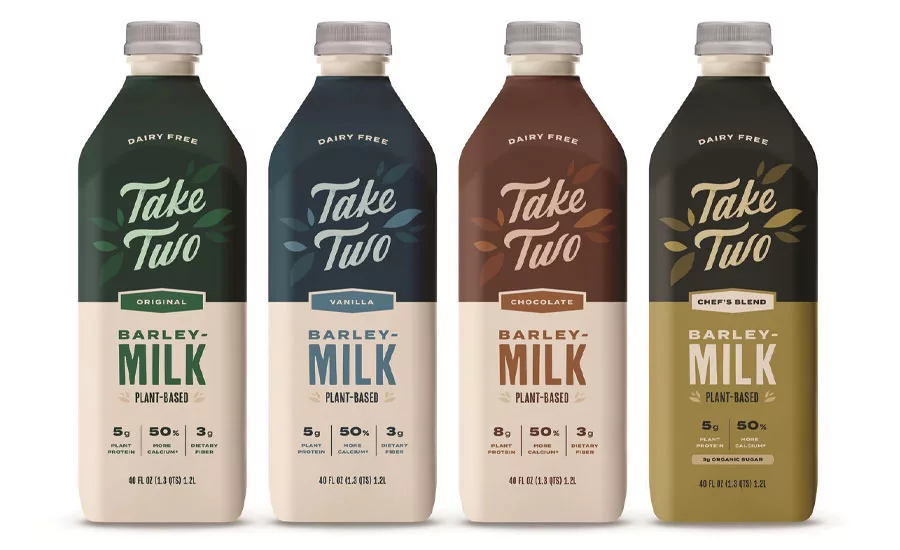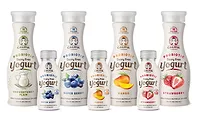2020 State of the Beverage Industry: Dairy market, alternatives can flourish together
Promotion of product attributes will help milk, plant-based beverages

Henry Ford is known to have said: “Coming together is a beginning. Keeping together is progress. Working together is success.” The inspirational quote often is circulated among team-building exercises but the same sentiment could be said for the dairy and dairy alternatives market as the two have commonly been viewed as rivals versus comrades.
“Regardless of the growth or decline seen in dollar sales, both dairy and non-dairy milks are being confronted by stagnant purchasing patterns,” stated Mintel in its October 2019 report titled “Milk And Non-Dairy Milk – US.” “Indeed, 63 percent of dairy milk consumers and 52 percent of non-dairy milk consumers are purchasing the same amount of milk now as they were one year ago. These habitual buying patterns could prove challenging for sales in the future, as consumers are not motivated to change their shopping behavior, be it positive or negative.”
In the November 2019 Beverage Industry, Chicago-based Mintel noted that whether it is dairy or non-dairy milk, adults typically use these products as an additive for baking, cereal, coffee or tea, versus as a beverage choice.
“Only 14 percent of people who buy dairy milk use it on-the-go (15 percent, non-dairy) and 12 percent use it as a post-workout drink (19 percent, non-dairy),” the report stated. “Similarly, a correspondence analysis on usage occasions shows that there is no clear choice for dairy or non-dairy milks when it comes to drinking a glass of milk with a meal, or as a drink for children.”
The report added that dairy and non-dairy milks contain high protein amounts and healthy fats, which aligns with numerous drinking occasions such as breakfast drinks, workout recovery or as a meal replacement beverage.
“Repositioning the beverages to shed light on these alternative usages may benefit overall sales by encouraging consumers to consider new ways to incorporate milk into their day,” the report stated. “This may also limit some of the cannibalization within the market by reducing the internal competition, eliminating the one-milk-fits-all purchasing mentality.”
Although research suggests the benefits of addressing the broader milk category, one of the biggest markets needing attention are dairy milks.
(Individual brands)
| DOLLAR SALES | % CHANGE VS. PRIOR YEAR | MARKET SHARE | % CHANGE VS. PRIOR YEAR | |
| Other HP Hood | $43,570,086 | 923.7 | 19.8 | 16.3 |
| Danone | $30,790,614 | -13.1 | 14 | -14.8 |
| Oatly | $27,211,040 | 370.2 | 12.4 | 7.7 |
| Ripple | $26,680,854 | 28.6 | 12.1 | -4.8 |
| Silk Oat Yeah | $25,023,537 | 668.6 | 11.4 | 8.7 |
| Category total* | $220,112,116 | 79 | 100 | --- |
*Includes brands not listed.
Source: Information Resources Inc. (IRI), Chicago. Total U.S. supermarkets, drug stores, gas and convenience stores, mass merchandisers, military commissaries, and select club and dollar retail chains for the 52 weeks ending May 17.
Dairy milk has been the most challenged as sales have fallen 22 percent since 2014, the report stated. However, the category has seen a boost from consumer stockpiling behavior as a result of the coronavirus pandemic. For the 52 weeks ending May 17 in total U.S. multi-outlets and convenience stores, the milk category’s dollar sales was up 5.6 percent (totaling more than $15.9 billion), data from Chicago-based Information Resources Inc. (IRI) reports.
Refrigerated skim/lowfat milk, a segment that has been challenged in recent years, also has seen an uptick. Dollar sales for the segment reached $7.1 billion, a 3 percent increase. Meanwhile, whole milk continues to makes gains in the market as the segment reached $5.2 billion in sales, an 8.6 percent increase, according to IRI data for the 52 weeks ending May 17.
However, analysis shows that innovation will be key for the category to continue its positive performance beyond the pandemic.
“Fairlife, I think, is a really compelling story,” said John Crawford, vice president of client insights for dairy for IRI, in Beverage Industry’s November 2019 issue. “You have a couple of brands that are following fairlife into that ultra-filtered milk. You’ve got Organic Valley that has their Organic Valley Ultra that they’re coming out with now, and then you’ve got Dairy Gold, which launched a product called Dairy Gold Fit; that is another ultra-filtered product. I would expect more folks to follow suit in this space. Think about it [with] more protein, lower sugar and extended shelf life and lactose free — that’s a pretty good mix of attributes there for a dairy milk.”
Promoting healthy attributes is touted by experts as a way to strengthen not just the dairy market but also its plant-based alternatives.
“For kefir, 86 percent of them have a prebiotic or a probiotic claim to it, and that’s some of the big claims that are on there. There’s a little bit of less fat claims on there, some low lactose claims, there’s some organic claims but the big claim is around pre- and probiotics,” Crawford said.
(Individual brands)
| DOLLAR SALES | % CHANGE VS. PRIOR YEAR | MARKET SHARE | % CHANGE VS. PRIOR YEAR | |
| Blue Diamond Almond Breeze | $554,245,002 | 9.8 | 39.6 | 0.1 |
| Danone | $474,319,085 | 10.1 | 33.9 | 0.2 |
| Private label | $253,158,031 | 12.9 | 18.1 | 0.5 |
| Califia Farms | $88,481,602 | 4.2 | 6.3 | -0.3 |
| Silk Almond Light | $15,559,342 | -18 | 1.1 | 0 |
| Category total* | $1,400,837,177 | 9.5 | 100 | --- |
*Includes brands not listed.
Source: Information Resources Inc. (IRI), Chicago. Total U.S. supermarkets, drug stores, gas and convenience stores, mass merchandisers, military commissaries, and select club and dollar retail chains for the 52 weeks ending May 17.
For the non-dairy market, analysis shows that the reported benefits of plant-based diets has lifted the performance of these categories.
“Currently, 38 percent of adults try to eat some plant-based foods,” Mintel’s report stated. “In fact, more than a quarter of adults report following a specialized plant-based diet. As a result, plant-based options are now widely available across nearly all food and drink categories and performing well. Non-dairy milks are no exception. Brands can benefit from these diet trends to further encourage growth, particularly from new consumers, as only 59 percent of adults purchased non-dairy milk in the past three months, compared to the 90 percent who purchased dairy milk.”
IRI’s Crawford highlighted that understanding the appeal of dairy alternative milks remains complex.
“There’s certainly some diets that are key in avoiding dairy,” he said. “There’s an increase of folks that are lactose intolerant or believe they’re lactose intolerant and certainly that’s a key factor. Certainly, some of the sustainability, the carbon footprint and some of the animal welfare is another component of it. As vegetarian and vegan diets continue to grow a little bit and you get some other diets that are in there as well, I think those are all contributing to it.
Looking for a reprint of this article?
From high-res PDFs to custom plaques, order your copy today!






